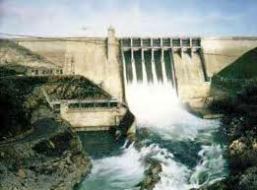We have a new paper accepted (in press) on the role of landscape processes on climate. It is
Woldemichael, A. T., F. Hossain, R. Pielke Sr., and A. Beltrán-Przekurat (2012), Understanding the impact of dam-triggered land use/land cover change on the modification of extreme precipitation, Water Resour. Res., 48, WXXXXX, doi:10.1029/2011WR011684.
The abstract reads [highlight added]
Two specific questions are addressed in this study regarding dams (artificial reservoirs). (1) Can a dam (artificial reservoir) and the land use/land cover (LULC) changes triggered by it physically alter extreme precipitation? The term extreme precipitation (EP) is used as a way of representing the model-derived upper bound of precipitation that pertains to the engineering definition of the standard probable maximum precipitation (PMP) used in design of dams. (2) Among the commonly experienced LULC changes due to dams, which type of change leads to the most detectable alteration of extreme precipitation? The American River Basin (ARW) and the Folsom dam were selected as a study region. Four scenarios of LULC change (comprising also various reservoir surface areas) were analyzed in a step by step fashion to elucidate the scenario leading to most significant impact on EP. The Regional Atmospheric Modeling System (RAMS, version 6.2) was used to analyze the impact of these LULC scenarios in two modes. In the first mode (called normal), the probable precipitation pattern due to each LULC scenario was identified. The second mode (called moisture-maximized), the PMP pattern represented from a 100% relative humidity profile was generated as an indicator of extreme precipitation (EP). For the particular case of ARW and Folsom dam, irrigation was found as having the most detectable impact on EP (a 5% increase in 72 h total for the normal mode and a 3% increase for the moisture-maximized mode) in and around the ARW watershed. Doubling the reservoir size, on the other hand, brought only a small change in EP. Our RAMS-simulated results demonstrate that LULC changes driven by dams can, in fact, alter the local to regional hydrometeorology as well as extreme precipitation. There is a strong possibility of a positive feedback mechanism initiated by irrigated landscapes located upwind of orographic rain producing watersheds that are impounded by large dams.
In the conclusions we wrote
The key goal of our study was to seek answers to two specific science questions: (1) Can a dam (artificial reservoir) and the land use/land cover (LULC) changes triggered by it physically contribute to the modification of extreme precipitation? (2) Among the commonly experienced LULC change due to dams, which type of change leads to the most detectable alteration of extreme precipitation? The answer to our first question is a “yes” while for the second question, we observed that for a dam in which the irrigated land is down- stream and upwind, the irrigation impact is much more superior from the two examined impacts in modifying the extreme precipitation patterns.
This is another in the continuing series of papers by ourselves and other colleagues that document the first-order climate forcing of land use/land cover change.

